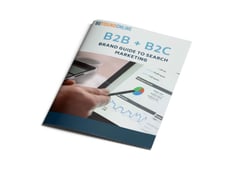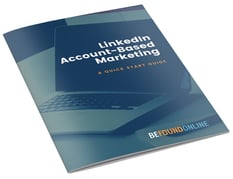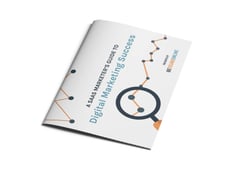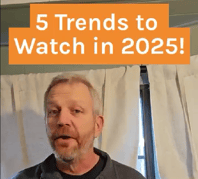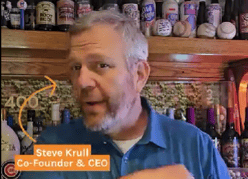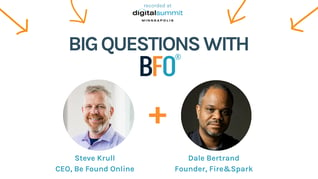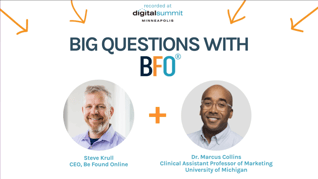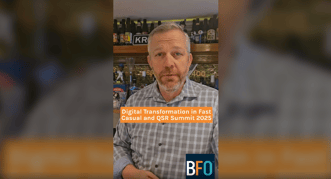Revamp Your Digital Marketing Strategy in 2024: A Guide for Travel & Hospitality Brands
January 23, 2024
9 Minute Read
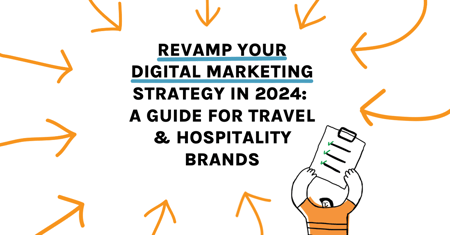
2023 is in the rearview, and if you’re still using your strategies from last year, we hate to break it to ya, but it’s time for some updating. The world of digital marketing is forever changing, and if you’re sticking to a strategy that’s months (or even years—we’re not here to judge) old, you’re likely not seeing the success your travel and hospitality business deserves.
But hang tight! In the ever-evolving mix of algorithms, hashtags, and viral trends, the team at BFO is here to guide you through any uncharted territories. Below, we’re sharing more on how you can revamp your digital marketing strategy in 2024. From the latest in artificial intelligence to the game-changing impact of server-side tracking, our expert analysis ensures you're ready to stand out against the noise.
Enough chit-chat—let’s get to it.
Assess Your Current Strategy
Hold your horses. We know you’re excited about 2024, but before you can move forward, you’ve got to look back. Though it might sound tedious, it’s actually incredibly insightful. Simply block out a day on your calendar to look at your current digital marketing approach. Ask yourself:

- Which of our campaigns were most successful in 2023?
- Did our audience change over the past year?
- Where did our efforts fall flat, and how can we improve in 2024?
- Are there any emerging trends in travel and hospitality we can incorporate into our strategy?
This reflective analysis not only makes you feel like a detective (fun) but will help you identify your strengths and weaknesses. Doing so allows you to better understand what resonates with your audience and refine your strategies based on data-driven decisions. Because the last thing you want is to enter 2024 throwing spaghetti on the wall and hoping it sticks. Spaghetti is for eating—not wasting.
Leverage AR and VR
If you read our 2023 year-in-review blog [link when published], you know we love us some acronyms. Our industry might constantly change, but in the past few years, we’ve been given a fantastic opportunity to immerse people into our brands. That's where augmented reality (AR), virtual reality (VR), and mixed reality (MR) come into play. If that's making your head spin even without the VR headset on, you can just use Extended Reality (XR) as a blanket to talk about all three.
the past few years, we’ve been given a fantastic opportunity to immerse people into our brands. That's where augmented reality (AR), virtual reality (VR), and mixed reality (MR) come into play. If that's making your head spin even without the VR headset on, you can just use Extended Reality (XR) as a blanket to talk about all three.
We’re saying goodbye to the era of passive consumer interaction (sorry, billboards—it’s not personal), making room for experiences that captivate and resonate. When you leverage AR and VR technologies, you bring your audience into the fold, showing them exactly why your offers are better than others.
If you’re a hotel, consider adding a virtual walk through of your lobby to your site. Or, if your business is tough to find, add a virtual tour of the outside of your building, making it easier for guests to find where you’re at.
The possibilities are endless, whether it’s an interactive experience or a virtual tour. So, this year, revamp your digital marketing strategy to include AR and VR. You’ll create a lasting impression and finally be able to sit at the cool kid's table in the digital marketing cafeteria.
Personalize Everything
Ever seen an ad pop up on your feed that has nothing to do with you? It’s annoying, right? So, let’s ensure your brand isn’t putting out that kind of content. In 2024, personalization should be at the top of your campaign to-do lists.
Today, customers crave tailored interactions. Your digital marketing partner should help you analyze vast amounts of data to determine which experiences will resonate with your audience. Utilize feedback, pay attention to your data, and continuously update your campaigns to drive consistent conversions. And if doing so sounds like a personal nightmare, we’ve got you covered.
partner should help you analyze vast amounts of data to determine which experiences will resonate with your audience. Utilize feedback, pay attention to your data, and continuously update your campaigns to drive consistent conversions. And if doing so sounds like a personal nightmare, we’ve got you covered.
Keep an Eye on Google
Oh, Google. You never cease to amaze us. Fun fact: In 2023, Google updated its algorithm nine times. So this year, if you want to revamp your digital marketing strategy, you’ll need to keep your eye on the prize (aka Google). Doing so will ensure your website is as user-friendly as Google recommends, improving your search rankings and enhancing your customer experience along the way.
your digital marketing strategy, you’ll need to keep your eye on the prize (aka Google). Doing so will ensure your website is as user-friendly as Google recommends, improving your search rankings and enhancing your customer experience along the way.
On the heels of all that, some Google users may have noticed a change to the way they navigate the search engine results pages (SERPs) on Google…and AI is behind it. We’re talking about Google’s Search Generative Experience (SGE), which uses AI to enhance user experience by giving them more information and context without the user having to leave the SERP.
Marketers are not sure what type of impact this will have on organic rankings (the calculated work of SEO), the traffic driven to your site, or paid media through Google, but you bet your bottom dollar that we’re keeping our eyes and ears peeled to ensure we make the most of it for ourselves and our clients.
Want to to stay updated on all things Google? Don’t add that to your already full plate. Our monthly newsletter will deliver all new updates right to your inbox, so you’re prepared for whatever this pesky platform throws your way. And if you want the latest Google scoop, take a look at our Senior SEO Account Manager’s latest blog right here.
Cozy on up to Server-Side Tracking
One thing on the agenda for 2024: The rise of server-side tracking and an increased emphasis on first-party data. As privacy concerns continue shaping the digital landscape, server-side tracking becomes a must,![]() offering enhanced security and privacy compliance.
offering enhanced security and privacy compliance.
When you shift the data processing burden from the user's browser to the server, it ensures better privacy and provides more accurate insights into user behavior (*high-five*). Simultaneously, the increased importance placed on first-party data reflects a strategic response to evolving privacy regulations and the diminishing significance of third-party cookies.
We recommend building direct relationships with your audience and leveraging first-party data to create more personalized and targeted marketing campaigns.
New to server-side tracking? We know it might sound complex, but our Senior Analytics Analyst, Jon, is breaking down why you should make the shift right here!
Start Using Signals
Remember how we said Google is always changing? It is. Especially its approach to paid media. Their era of stringent keyword control is gradually fading, making way for custom audiences.
gradually fading, making way for custom audiences.
Google is pivoting toward Signals and Automation, ushering in a future where automated bidding and broad targeting are stealing the spotlight from narrow targeting. This means we’ll have an even better understanding of user behavior (score!), which will help us create those personalized campaigns we discussed earlier. Bottom line: Embrace Google’s changes so you don’t fall behind.
Don't Forget About Meta
Yes, we always talk about Google and its penchant for making changes, but we can’t forget about Meta. In 2024, Meta’s changes will also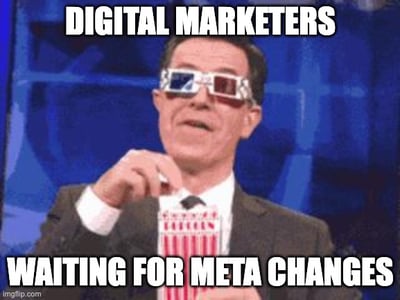 compete for the lead role in this year’s digital marketing screenplay (we’ll grab the popcorn if you’ll save us a seat).
compete for the lead role in this year’s digital marketing screenplay (we’ll grab the popcorn if you’ll save us a seat).
As the digital giant continues shaping online experiences, your business will want to stay updated regarding any new changes. Meta's platforms, including Facebook and Instagram, often undergo updates that can significantly impact your strategies and user engagement. Staying on top of these changes ensures your digital marketing efforts remain effective and aligned with the latest features and algorithms.
Stay Local
This year, the role of local search should secure a spot in your digital marketing strategy. With search engines prioritizing localized results, optimizing your online presence for specific regions becomes a game-changer.
optimizing your online presence for specific regions becomes a game-changer.
Start by fine-tuning your website content to include relevant local keywords, ensuring your business information is accurate and consistent across all pages. You should also embrace Google My Business optimization to maximize visibility in local search results. You’ll improve your SEO while developing stronger connections with potential guests in your area.
Test, Test, Test
Launching a campaign only to never touch it again might sound like a dream (because it is—we’re sorry), but in reality, 2024 should be the year you focus on continuous optimization. Hint: A/B testing is your friend. This method allows you to compare two versions of a webpage, email, or ad to determine which performs better regarding user engagement or conversion rates.
This method allows you to compare two versions of a webpage, email, or ad to determine which performs better regarding user engagement or conversion rates.
When you tweak different elements, you gain valuable insights into your audience's preferences and behavior. The result? Campaigns packed with content and information your people actually want to see. You can then make more informed decisions, refine your efforts, and create a stellar user experience based on real-time feedback. A/B testing, we love you.
Take a Mobile-First Approach
If you were to look at your screen time data on your phone, what would you see? If it’s a number you’re not likely to shout from the rooftops, we get it. But seeing this number might make you realize how important mobile-friendly campaigns really are.
To revamp your digital marketing game in 2024, prioritize mobile-friendly campaigns that captivate users and ensure a seamless experience across various devices. Implementing mobile app strategies enhances user engagement and loyalty, allowing your brand to stay at the forefront of your audience's minds. We’re talking swift loading times and intuitive navigation.
People are now booking cruises, hotel rooms, spa treatments, and more, all from their phones. That’s why adopting a mobile-first approach is paramount for any business looking to grow this year.
Where to from Here?
And there ya have it! Remember, in the dynamic world of digital marketing, adaptation isn’t just a strategy—it’s a necessity. The ever-evolving algorithms, emerging technologies, and shifting consumer behaviors offer a handful of new opportunities for businesses bold enough to take them.
Ready to make 2024 your most successful year yet? Our team is all hands on deck. Reach out to us today so we can help you create a seamless and impactful digital presence!

Kyle Geib
As Director of Marketing and Digital Communications, Kyle brings an extra layer of enthusiasm to BFO’s incredible team of experts. Dedicated to continuing to cultivate BFO’s presence as a unique and knowledgeable voice in the industry, he leans in on his experience marketing in both the B2C and B2B spaces.
CATEGORIES
SUBSCRIBE TO OUR BLOG
Stay up to date with the latest industry best practices in digital marketing!








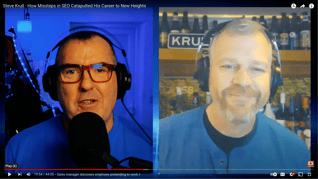







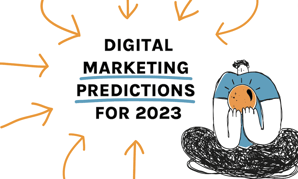
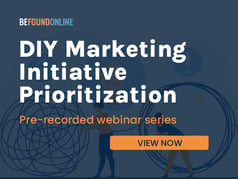
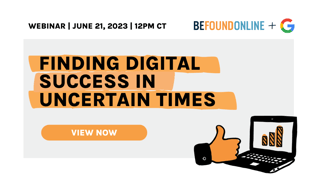

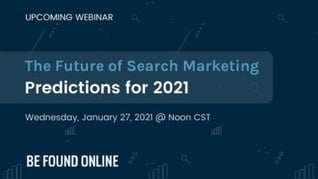


.png?width=339&height=179&name=Webinar%20Banner%20(1).png)

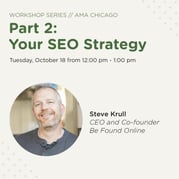

.png?width=339&height=179&name=July%20Webinar%20(Newsletter).png)
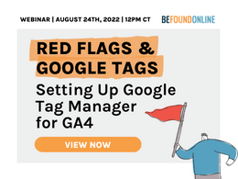
.png?width=339&height=179&name=Webinar%20Banner-April-02%20(1).png)
%20(4).png?width=339&height=179&name=Webinar%20Banner-May-02%20(1)%20(4).png)




.png?width=339&height=179&name=March%202023%20Webinar%20Ad%20(autoresponder).png)


